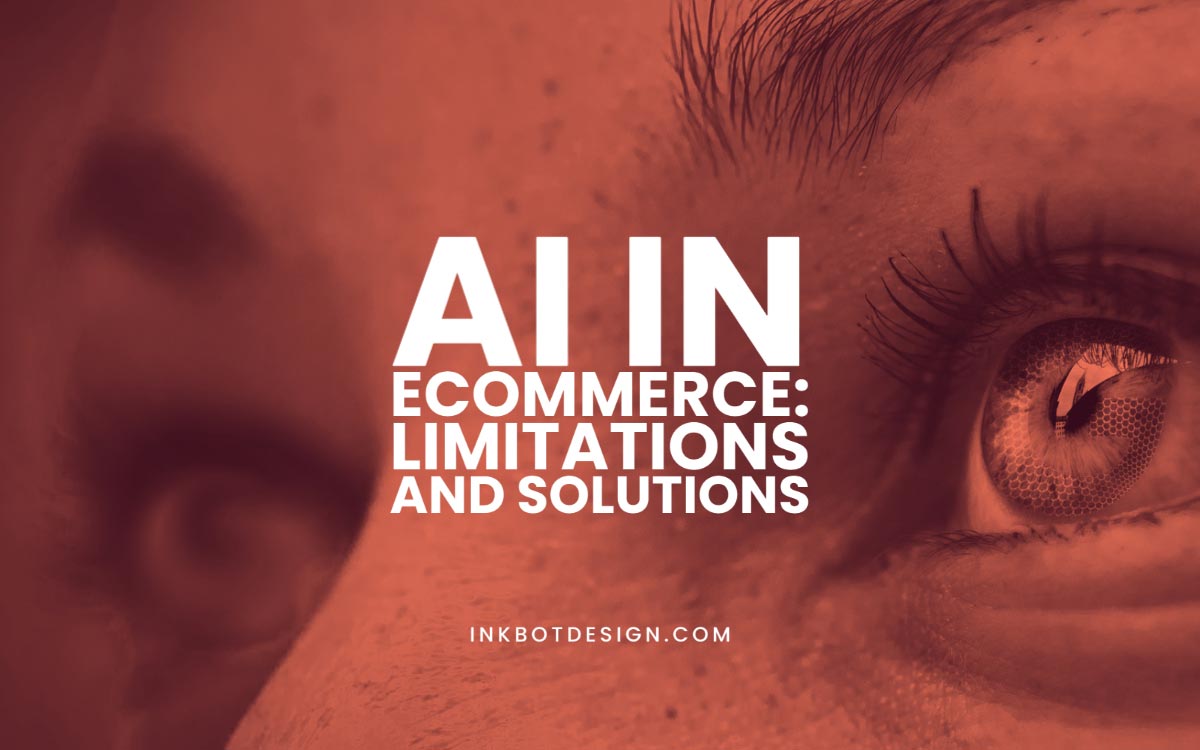
01 May AI in eCommerce: Limitations and Solutions
AI in eCommerce: Limitations and Solutions
Over the last few years, we’ve seen tremendous advances in artificial intelligence.
These changes can be attributed to the emergence of affordable neural networks and improvements in cloud infrastructure, computing power, and machine learning algorithms.
It’s not surprising that AI is getting some attention in digital commerce.
Real-world applications can range from product recommendations, intelligent chatbots, augmentation, or sentiment analysis.
Commerce brands like Amazon are no strangers to AI, using machine learning to power its product recommendation engine and using predictive analytics to maintain their one-day shipping promise.
Despite its advantages, AI is a somewhat costly and uncertain endeavour.
Many obstacles hinder AI adoption, from a lack of understanding of AI, inadequate or incomplete data, absence of skilled AI professionals, and difficulties in identifying valid use cases.
What is AI?
AI is a field of study that processes large data sets to predict future outcomes.
This field is quickly developing.
Modern AI systems can decipher and conclude human speech, compete in a rule-based system, self-assess decisions, and more.
At the same time, AI is not a magic bullet to any given problem.
These solutions have to be designed, tested, and require clean data to provide desired outcomes.
Limitations and Solutions of AI In eCommerce

Identifying a use case
Customers are increasingly wary of inadequate and irrelevant information.
They gravitate toward brands that understand and personalise their buying experiences.
Hiring more support staff could be the answer, but it’s challenging to scale.
AI, thus, offers a great alternative to human interactions – it can enrich the user experience with relevant product recommendations, tone and sentiment analysis, and computer vision.
One example of this is AI-powered chatbots.
They can not only answer questions 24/7 but even decipher tone and sentiment to make deductions and suggest hyper-personalised solutions.
Amazon has long relied on AI to facilitate recommendations at every level of the customer journey.
They use their massive retailer network and their customers’ personal data to teach the algorithm to suggest better products to customers.
Other examples include Lowe’s and Home Depot using computer imaging and natural language processing (NLP), respectively.
In the case of Lowe’s, AI-powered scanners help customers find products in their stores as well as reorder products automatically once shelves begin to empty.
By using AI to analyse pages of reviews, Home Depot can identify adjectives and descriptive words to help shoppers better understand the product.
These improvements led to greater engagement and higher sales.
Incomplete data
It’s an open secret that any AI is only as good as the data fed into it.
To work as intended, AI systems need to be trained with data beforehand.
That is, they need accurate, clean, and valuable data to conclude from.
With incomplete data, AI results will be misleading.
For many smaller businesses, the main question is where to get this data.
Besides gathering data across separate tools, you’ll need to hire data scientists and engineers to review data for completeness and uniformness.
Human resources
AI is not only about software engineering. It covers many disciplines such as mathematics, psychology, statistics, and linguistics.
Thus, AI departments include business intelligence engineers, AI architects, machine learning engineers, and data science teams.
Unfortunately, there is an industry-wide shortage across these functions, and companies must compete in a smaller talent market to move their AI project forward.
Implementation risks
With your data and human resources in place, you can get to work.
That means investing in researching, modelling, training, data sampling, and collecting feedback on your progress.
Even after successful implementation, you have to maintain a team to interpret and improve your AI algorithm.
Getting the whole company behind the AI project and fostering a new culture is not always easy.
Not surprisingly, all this makes eCommerce businesses wary of investing in AI projects.
Are there alternatives to AI in eCommerce?

AI has many practical applications in eCommerce, from product recommendations to chatbots and personalisation.
However, AI is not an off-the-shelf product, requiring everything from administering data to building a dedicated team.
The good news is that technology offers us many ways of reaching the same objectives with many AI alternatives on the market.
Customer service tools
Many customer service tools offer chatbots or some other AI-focused instruments to improve the customer experience.
These tools reduce the workload for teams and the overhead of managing a team of customer service personnel.
Many eCommerce stores utilise AI chatbots to increase awareness, offer suggestions, and generally facilitate decision-making.
Sales engagement tools
Those dealing with account-based selling and inside sales increasingly rely on AI-enabled sales enablement tools.
These tools increase productivity and offer suggestions to sales teams so that they can close deals.
These tools can help enterprise eCommerce teams automate, personalise, and predict the best course of action.
eCommerce workflow tools
Both standalone AI and eCommerce workflows use machine learning for customer engagement.
However, workflows can automate and route order functions such as credit approvals or notifying specific warehouses to fulfil orders.
Your business environment doesn’t sit still, so a flexible eCommerce workflow engine will enable you to adapt and react as opportunities present themselves.
This could mean pivoting to new business models or opening new stores and fostering a culture of innovation.
Is AI right for your eCommerce business?
Demand for personalisation is increasing, and AI is only going to get more accessible from here.
Many industries are expected to continue investing in AI technology, and eCommerce is no exception.
At the same time, AI should not hinder but instead help your business succeed.
Before choosing the AI path, carefully consider whether it’s the right decision for your customers, industry, and business.



